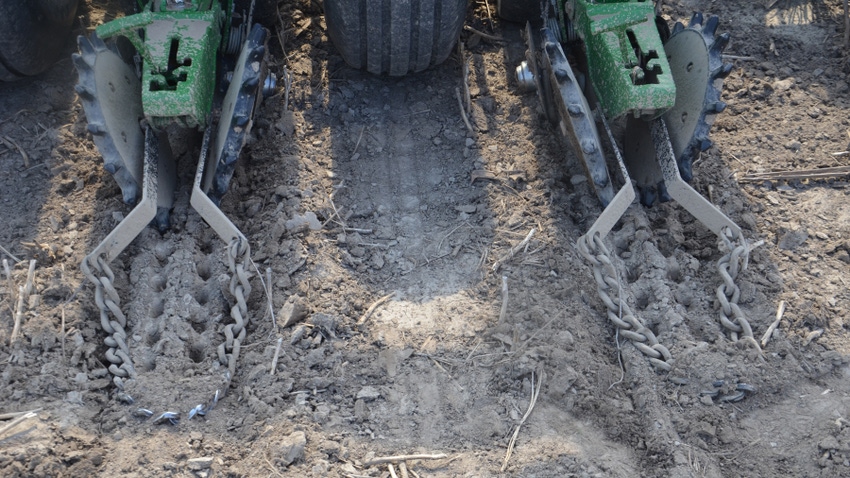
How much nitrogen can you afford to apply in corn? When? How? Will applying more nitrogen per acre guarantee more yield and more income? Is yield or return on investment most important?
These questions are enough to make your head spin. Nitrogen is tricky when it comes to figuring out how to manage it.
Ron Nolting, Johnson County, Ind., determined one strategy that works for him. “Putting starter with nitrogen on both sides of the row in 2-by-2-by-2 placement helps,” Nolting says. “When young corn roots find nutrients on both sides of the row, they get off to a better start.”
Testing the concept
The concept of applying starter fertilizer on both sides of the row vs. one side caught fire recently. Equipment companies began offering setups and aftermarket products that make rigging up your planter for 2-by-2-by-2 placement more feasible. The folks at Beck’s looked at 2-by-2-by-2 vs. conventional placement in Practical Farm Research studies. They don’t perform statistical analysis on results, but the same studies are conducted at multiple locations.
They compared 2-by-2-by-2 vs. 2-by-2 and also varied total N rate and how it was distributed during the season. Steve Gauck, a Beck’s regional agronomy manager, Greensburg, Ind., says the following results are based on two years of data at five sites: in Indiana, Kentucky, Michigan and two sites in Illinois.
Six treatments were compared:
A. 30 pounds 2-by-2 plus 160 pounds sidedress at V3 for 190 pounds N total (control)
B. 60 pounds 2-by-2-by-2 plus 70 pounds at V3 for 130 pounds N total
C. 60 pounds 2-by-2-by-2 plus 100 pounds at V3 for 160 pounds N total
D. 60 pounds 2-by-2-by-2 plus 130 pounds at V3 for 190 pounds N total
E. 60 pounds 2-by-2-by-2 plus 160 pounds at V3 for 220 pounds N total
F. 60 pounds 2-by-2-by-2 plus 190 pounds at V3 for 250 pounds N total
The two treatments receiving the most N, E and F, posted the highest yields, and the treatment receiving the least N, B, yielded the least. But that’s not the most important part of the story, Gauck says. Why? Because if your goal is net profit per acre, not yield, the treatment receiving the most N, F, ranks last.
Here’s how the treatments line up for net profit or return on investment based on the two-year average:
1. Treatment C, $39 per acre more than the control
2. Treatment D, $26 per acre more
3. Treatment B, $18 per acre more
4. Treatment E, $10 per acre more
5. Treatment A (control)
6. Treatment F, $12 per acre less than the control
“The trend seems to be that moving more of N from sidedress to starter and placing it 2-by-2-by-2 on both sides of the row pays best,” Gauck says. “Increase in profitability in this study was largely driven by cost savings on nitrogen.”
About the Author(s)
You May Also Like




